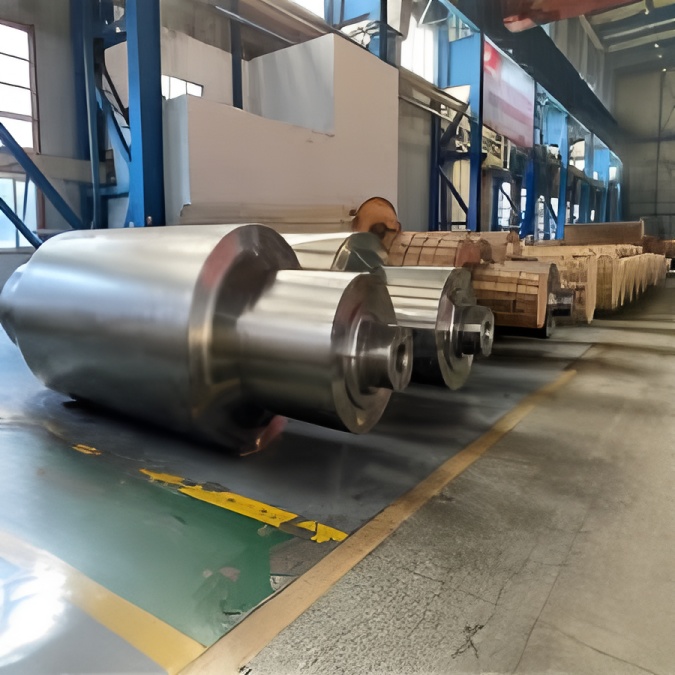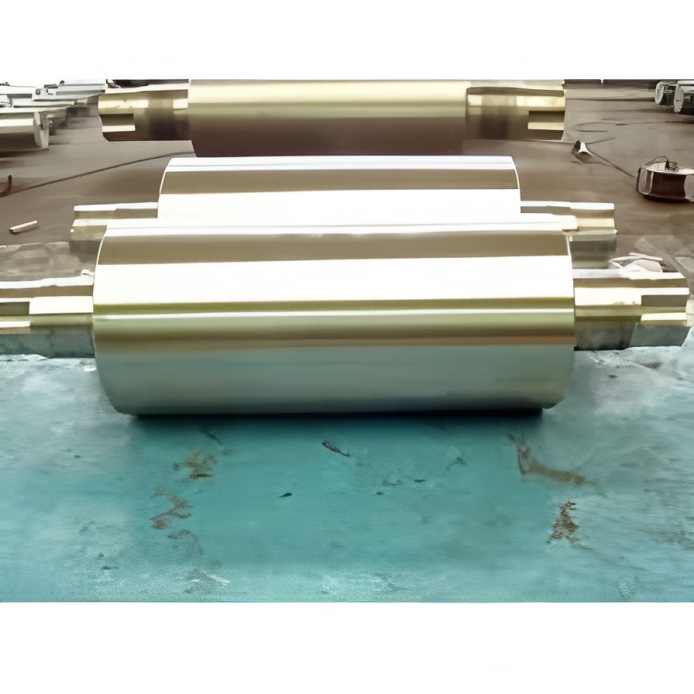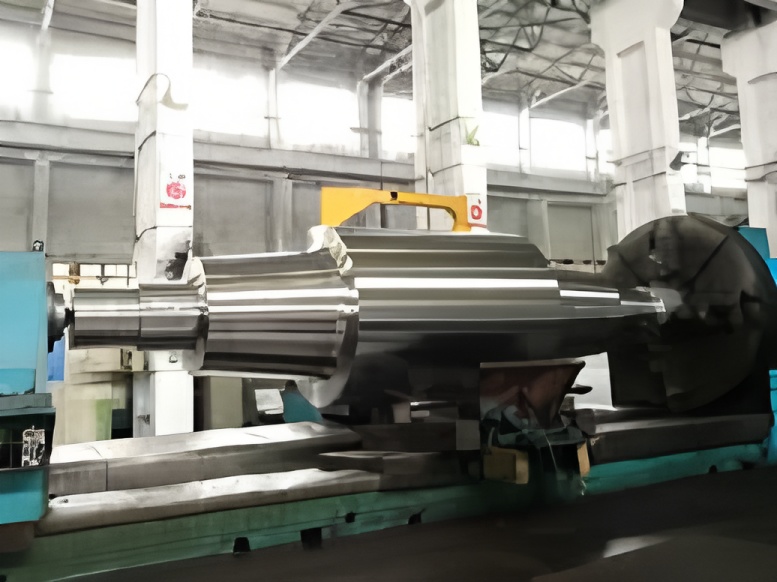Description: This article details the functions of alloying elements in HSS rolls and their influence on roll structure and properties. It further introduces developments in cast high-speed steel roll materials, as well as the effects of modification treatments and microalloying on the microstructure and performance of HSS rolls, providing guidance for the future development of high-performance HSS rolls.
Keywords: HSS roller, chemical composition of high-speed steel roll, high-speed steel roll material
Backup Rolls
Cast high-speed steel rolls, developed from conventional high-speed tool steel by increasing carbon and vanadium content, are characterized by high hardness, red hardness, hardenability, and excellent wear resistance. Since their first successful application in Japan in 1988, they have been used for over 20 years and are now widely employed in global steel rolling production—not only in hot strip mills but also in section mills, pipe mills, bar and wire rod mills, and cold strip mills. The use of cast HSS rolls significantly increases rolling throughput, reduces roll change frequency and grinding volume, improves mill operational rate, and decreases energy consumption, thereby helping to lower rolling costs and enhance product quality.
Composition Characteristics of High-Speed Steel Rolls
Most HSS rolls are based on the W6Mo5Cr4V2 (M2) high-speed steel, with the key difference being higher carbon and vanadium content. The volume fraction of carbides—typically between 9% and 15%, compared to less than 8% in traditional tool steels—is closely tied to composition, while the solidification cooling method has limited influence. Key compositional features include:
Higher carbon and vanadium content to form high-hardness MC carbides and improve wear resistance.
Elevated chromium content to promote M₇C₃ carbides, enhancing surface roughness resistance and reducing rolling force.
For centrifugally cast rolls, niobium content below 5% reduces segregation caused by density variations among alloying elements.
Compositions vary based on rolling conditions, mill types, and manufacturing methods. Typical compositions are shown in Table 1.

Table 1: Composition Comparison of Domestic and International HSS Rolls (wt%)
| Element | GP (China) | HITACHI (Japan) | AKERS (Sweden) | NSC (Japan) |
|---|---|---|---|---|
| C | 1.50–2.20 | 1.50–3.50 | 1.50–2.50 | 1.50–2.40 |
| Si | 0.30–1.00 | 0.30–1.00 | 0.20–1.20 | — |
| Mn | 0.40–1.20 | 0.30–1.50 | 0.20–1.20 | — |
| Cr | 3.00–8.00 | 2.00–7.00 | 3.00–12.00 | 2.00–10.00 |
| Ni | 0.00–1.50 | < 5.00 | 0.50–2.00 | < 5.00 |
| Mo | 2.00–8.00 | < 10.00 | 1.00–8.00 | 2.00–10.00 |
| V | 2.00–9.00 | 3.00–10.00 | 1.00–8.00 | 2.00–10.00 |
| W | 0.00–8.00 | < 20.00 | 0–5.0 | 2.00–10.00 |
| Co | ≤ 8.00 | < 10.00 | — | ≤ 10.0 |
| Nb | ≤ 5.00 | — | 0–5.0 | ≤ 10.0 |
Role of Alloying Elements
Common elements include Cr, V, W, Mo, and sometimes Nb, Co, and Ni. Their main effects are:
Chromium (4–6%): Enhances hardenability and red hardness. Higher Cr promotes M₇C₃ formation, improving surface roughness and thermal shock resistance.
Tungsten & Molybdenum: Improve tempering resistance and red hardness. Molybdenum is often preferred over tungsten to avoid segregation in centrifugal casting. Typically, Mo is maintained at 3–5%, and W below 2%.
Vanadium (4–6%): Forms high-hardness VC carbides (HV > 3000), refining grains and increasing wear resistance. Excess V can cause grain boundary cracks and surface adhesion.
Carbon: Balances carbide formation and matrix properties. Optimal content is determined empirically considering other carbide-forming elements.
Other Elements:
Niobium reduces VC segregation in centrifugal casting.
Cobalt (≤5%) improves high-temperature wear resistance but reduces toughness.
Nickel (≤2%) enhances matrix toughness but may retain austenite.
Development of HSS Roll Materials
HSS rolls exhibit tensile strength around 800 MPa and hardness HS 75–90. Primary manufacturing methods include centrifugal casting, continuous casting (CPC), and hot isostatic pressing (HIP). Centrifugal casting is most common due to its efficiency and simplicity. Recent developments focus on:
Increasing Cr and Mo to strengthen carbides and improve wear resistance.
Using boron to form hard borides, enhancing wear resistance and reducing cost.
Applying modification treatments (e.g., rare earth, Ti, K/Na) to refine carbides and improve toughness and thermal fatigue resistance.
Advances in Microstructure and Performance
Cast HSS rolls often contain coarse carbides, leading to low strength and toughness. Modification and microalloying can refine the structure:
Rare Earths: Refine austenite grains and carbides, improving mechanical properties (Table 3).
Titanium: Forms TiC, which serves as a nucleation site for MC carbides, refining the structure and enhancing toughness and wear resistance.
Composite Modification: Rare earth-titanium-nitrogen-potassium treatment improves thermal fatigue resistance and crack inhibition.
Table 3: Effect of RE Modification on Mechanical Properties of HSS Rolls

| Treatment | Hardness (HRC) | Red Hardness (HRC) | Fracture Toughness (MPa·m¹/²) | Impact Toughness (J·cm⁻²) |
|---|---|---|---|---|
| With RE | 66.3 | 61.5 | 25.91 | 10.17 |
| Without RE | 64.5 | 60.4 | 22.08 | 7.38 |
Conclusion
Future efforts should focus on low-alloy, high-boron HSS rolls to reduce costs, alongside research on solidification behavior, heat treatment, and mechanical properties. Modification and microalloying enhance strength, toughness, and wear resistance, but process stability requires further improvement. Continued research on forming processes and application characteristics will facilitate broader adoption of high-performance HSS rolls.


